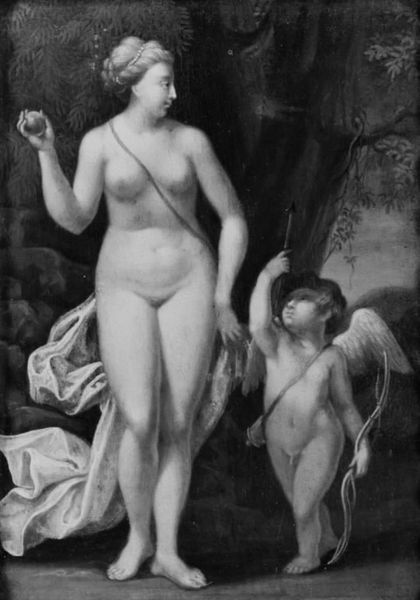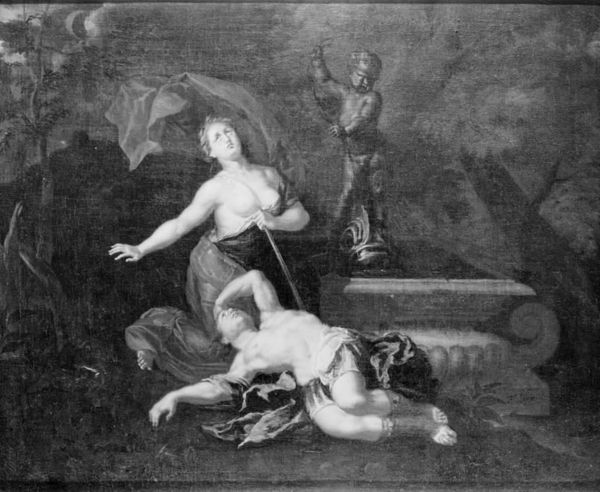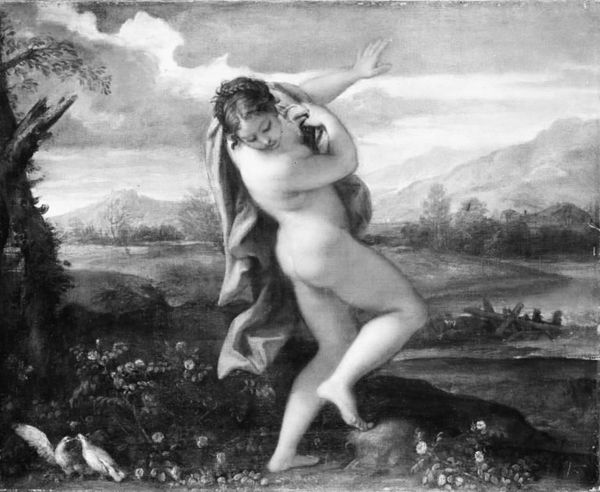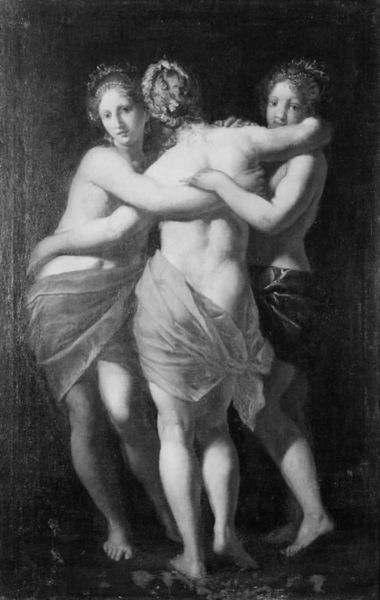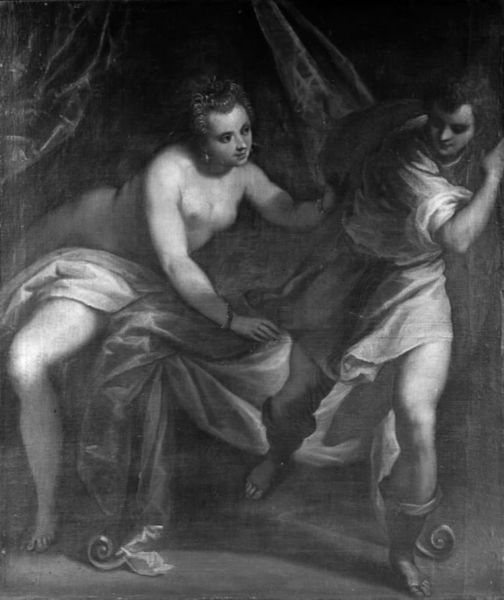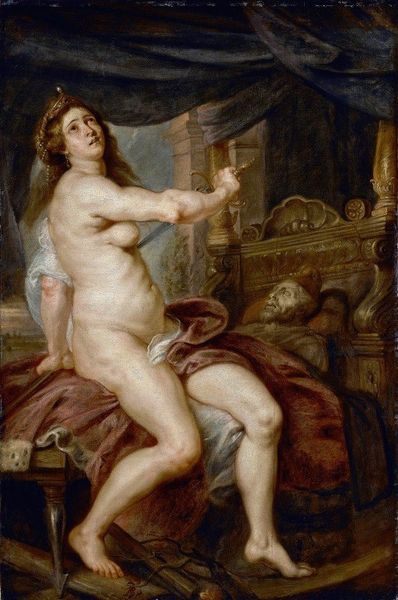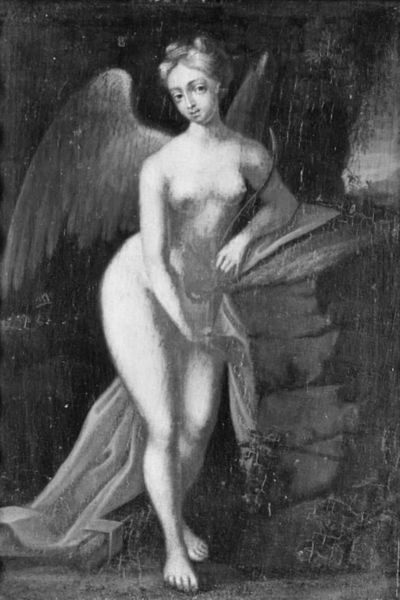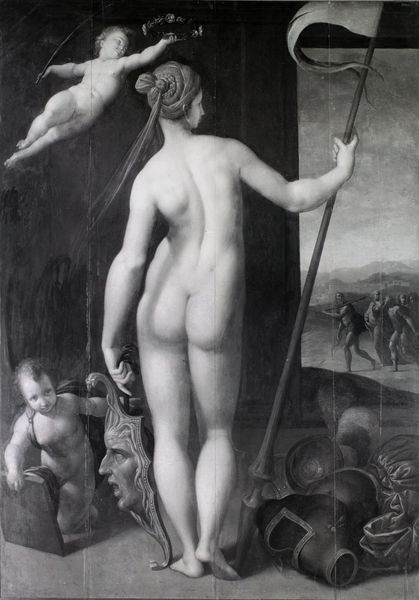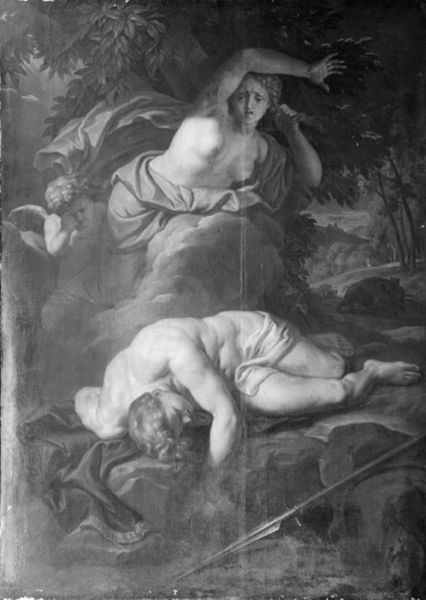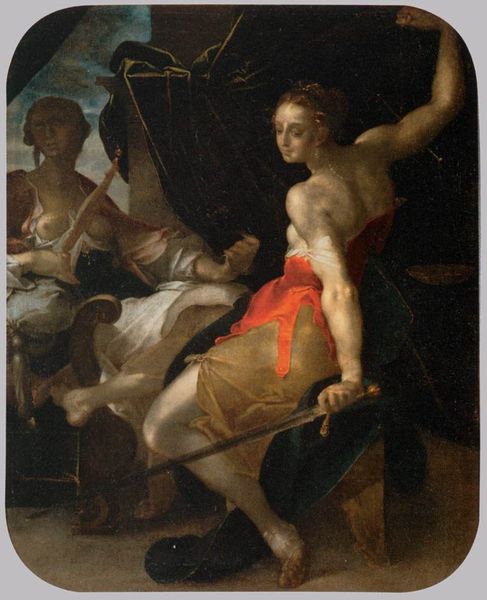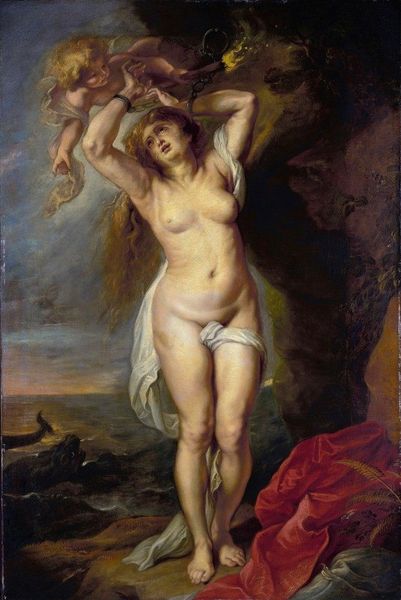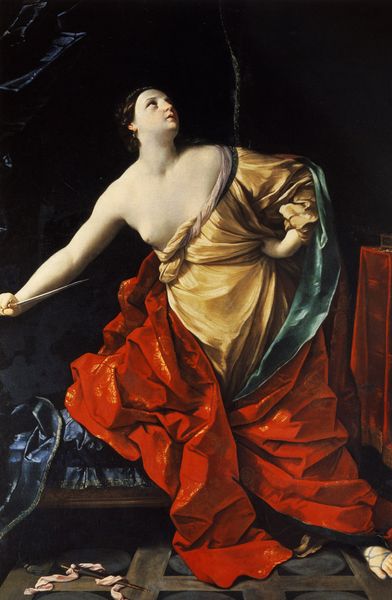
painting, oil-paint
#
allegory
#
painting
#
oil-paint
#
mannerism
#
black and white
#
history-painting
#
monochrome
#
nude
#
monochrome
Dimensions: 93 cm (height) x 72 cm (width) (Netto)
Curator: Here we have "The Suicide of Lucretia" attributed to Abraham Bloemaert, estimated to have been painted sometime between 1561 and 1611. Editor: It's immediately striking how stark this image is. The high contrast, the monochrome palette – it amplifies the drama, doesn't it? A sort of theatrical moment, frozen. Curator: Indeed. It’s a powerful rendering of Lucretia, a noblewoman whose story became a cornerstone in discussions of female virtue and Roman Republican ideals. The painting speaks volumes about the political landscape of the time, engaging with concepts of honor, power, and the repercussions of sexual assault. Editor: I see that, but also look at how the light emphasizes her form. The stark lighting defines her musculature; even in agony, there's an idealized beauty. It's almost sculptural in its treatment of form and light. Curator: Consider the historical implications. Lucretia's suicide was not just a personal tragedy; it ignited a revolution, marking the end of the Roman monarchy and the dawn of the Republic. This act, therefore, transcends the personal and becomes a potent symbol of resistance against tyranny and the reclamation of autonomy. The act itself becomes a referendum. Editor: The sword—it serves as a visual anchor, doesn't it? Leading the eye directly to the wound and her pained expression. The artist's use of foreshortening and the crisp lines create a sharp focal point. Curator: Absolutely. Furthermore, her defiance—notice the raised arm and clutched cloth—emphasizes her final act of reclaiming control over her body and her narrative, particularly relevant when we view it through a feminist lens today. Editor: Yes, seeing this work certainly goes beyond the immediate drama, it becomes an intersection of light, form and symbolic gravity. Curator: Absolutely. Considering Lucretia's act through the prism of historical trauma and female agency reshapes our comprehension. It calls for deep introspection on patriarchal structures and the enduring quest for self-determination. Editor: For me, returning to my initial perspective, the piece underscores how potent artistic choices regarding color and contrast can sculpt not just form, but also perception.
Comments
No comments
Be the first to comment and join the conversation on the ultimate creative platform.
